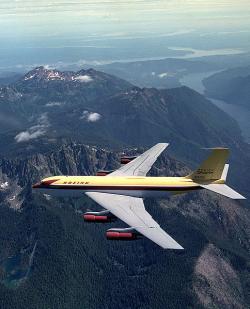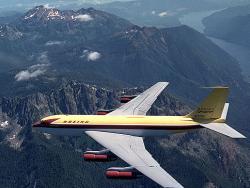The 367-80 is the prototype for most jet transports. Its success was due largely to its mechanical systems, including turbine engines with thrust reversers and noise suppressors, redundant hydraulic control systems, and an improved cabin-pressurization system. Honeycomb flap panels were introduced, along with a strong, lightweight structural design that controlled fatigue cracking. These led to several innovations in aircraft tooling and manufacturing techniques.
The Dash-80 was the first commercial airliner economical enough to take the US airline industry off subsidy.
Boeing

YearAdded:
Image Credit: Courtesy Wikipedia/Boeing Dreamscape (CC BY 2.0)Image Caption: Prototype of the Boeing 707 and most jet transport systems, the Boeing 367-80 established economic feasibility of commercial air travel.Era_date_from: 1954
1994
Innovations

The 367-80 is the prototype for most jet transports. Its success was due largely to its mechanical systems, including turbine engines with thrust reversers and noise suppressors, redundant hydraulic control systems, and an improved cabin-pressurization system. Honeycomb flap panels were introduced… Read More


